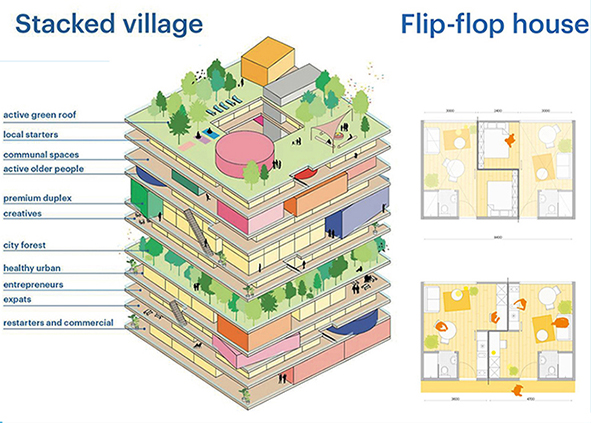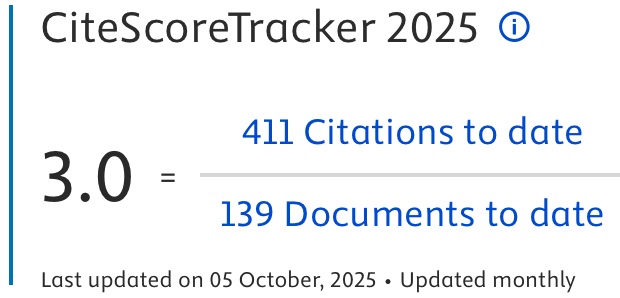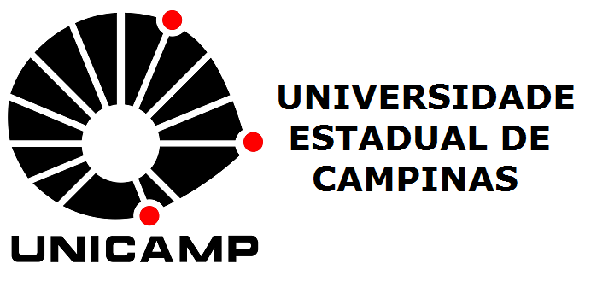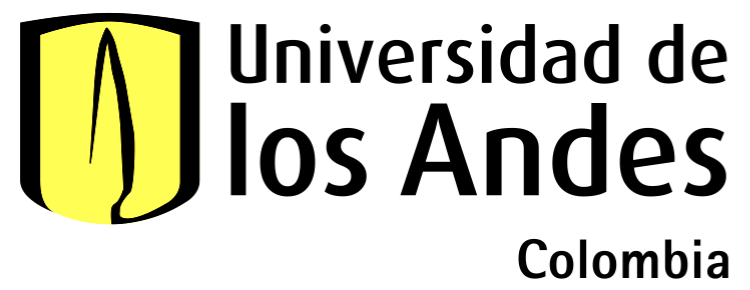Rethinking housing – Design and architecture for flexible and affordable living
DOI:
https://doi.org/10.69143/2464-9309/17102025Keywords:
collective housing, design, modularity, flexibility, affordabilityAbstract
Architecture is called to face the challenges of an era marked by global change, economic instability, environmental crises, geopolitical tensions, and pandemic emergencies. One of the main fields of investigation through which a response can be articulated is housing, the core of the city, and a strategic area for identifying and experimenting with new paradigms capable of adequately addressing contemporary needs. This perspective is developed through housing case studies that contribute to an ecological transition, offering quality solutions for various ‘dimensions’ of living and segments of social demand, improving well-being and a sense of community. Starting from the current condition of housing hardship, an approach is proposed that moves away from the characteristics of permanence and immutability toward a redefinition of collective housing design as a space of flexibility, modularity, and affordability.
Article info
Received: 15/03/2025; Revised: 24/04/2025; Accepted: 03/05/2025
Downloads
Article Metrics Graph
References
Atelier Kempe Thill (2008), “Specific neutrality – A manifesto for new collective housing”, in A+T Architecture Publishers, newspaper online, 27/05/2008. [Online] Available at: aplust.net/blog/specific_neutrality_a_manifesto_for_new_collective_housing/ [Accessed 12 April 2025].
Bauman, Z. (2017), Retrotopia, Polity Press, Cambridge.
Beck, U. (1992), Risk Society – Towards a New Modernity, Sage Publications, London.
Bergan, T. L., Gorman-Murray, A. and Power, E. R. (2020), “Coliving housing – Home cultures of precarity for the new creative class | La vie en colocation – Les cultures du domicile issues de la précarité et la nouvelle classe creative | Alojamiento en convivencia – Culturas domésticas de la precariedad para la nueva clase creativa”, in Social & Cultural Geography, vol. 22, issue 9, pp. 1204-1222. [Online] Available at: doi.org/10.1080/14649365.2020.1734230 [Accessed 12 April 2025].
Berretta, T., Desideri, F. and Staltari, M. (2024), “Il progetto dello spazio pubblico, tra complessità e crisi ecologica – Da sfida a opportunità per la rigenerazione urbana | Public space project, between complexity and ecological crisis – From challenge to opportunity for urban regeneration”, in Agathón | International Journal of Architecture, Art and Design, vol. 16, pp. 74-87. [Online] Available at: doi.org/10.19229/2464-9309/1662024 [Accessed 12 April 2025].
Butera, F. M. (2024), “La città ideale | The Ideal City”, in Agathón | International Journal of Architecture, Art and Design, vol. 16, pp. 30-39. [Online] Available at: doi.org/10.19229/2464-9309/1622024 [Accessed 12 April 2025].
Canovas, A. and De Andrés, J. (2023), “Soluzioni locali per sfide globali – L’edilizia residenziale come catalizzatore della transizione ecologica | Solving global challenges locally – Collective housing as a catalyst for ecological transition”, in Agathón | International Journal of Architecture, Art and Design, vol. 13, pp. 67-74. [Online] Available at: doi.org/10.19229/2464-9309/1352023 [Accessed 12 April 2025].
Celata, F. (2017), La airbnbificazione delle città – Gli effetti a Roma tra centro e periferia. [Online] Available at: memotef.web.uniroma1.it/sites/ default/files/Celata_Airbnbificazione_Roma_2017_0.pdf [Accessed 12 April 2025].
Chiaro, G. and Pera, C. (2022), “Overview – Il tema dell’abitare nel PNRR”, in Quaderni sulla Ripresa e Resilienza del Paese, vol. 1, pp. 13-24. [Online] Available at: archivio.caritas.it/materiali/Italia/qrrp/qrrp_num1_mar2022.pdf [Accessed 12 April 2025].
Chourasia, A., Singhal, S. and Manivannan (2022), “Prefabricated Volumetric Modular Construction – A Review on Current Systems, Challenges, and Future Prospects, in Practice Periodical on Structural Design and Construction, vol. 28, issue 1. [Online] Available at: doi.org/10.1061/PPSCFX.SCENG-1185 [Accessed 12 April 2025].
Codispoti, O. (2018), Forma urbana e sostenibilità – L’esperienza degli ecoquartieri europei, List Lab, Trento.
Cohen, J. L. (2014), “Le Corbusier’s Modulor and the Debate on Proportion in France”, in Architectural Histories, vol. 2 is-sue 1, article 23, pp. 1-14. [Online] Available at: doi.org/10.5334/ah.by [Accessed 12 April 2025].
Coricelli, F. (2021), “The Beach is Boring – The Collective Space of Co-living”, in Vassallo, I., Cerruti But, M., Setti, G. and Kercuku, A. (eds), Spatial Tensions in Urban Design – Understanding Contemporary Urban Phenomena, Springer, Cham, pp. 99-108. [Online] Available at: doi.org/10.1007/978-3-030-84083-9_8 [Accessed 12 April 2025].
Ferdous, W., Bai, Y., Ngo, T. D., Manalo, A. and Mendis, P. (2019), “New advancements, challenges and opportunities of mul-ti-storey modular buildings – A state-of-the-art review”, in Engineering Structures, vol. 183, pp. 883-893. [Online] Avai-lable at: doi.org/10.1016/j.engstruct.2019.01.061 [Accessed 12 April 2025].
Förster, W. (2011), “Architettura sociale e politiche della casa a Vienna”, in Scavuzzo, L. (ed.), Social Housing a Vienna – Il progetto della residenza come campo di sperimentazione per le politiche pubbliche, Maggioli Editore, Rimini, pp. 7-11.
Forty, A. (2004), Parole e edifici – Un vocabolario per l’architettura moderna, Edizioni Pendragon, Bologna.
Ginelli, E. (2022), “L’edilizia residenziale pubblica in Italia – Definizioni e prospettive”, in Delera, A. and Ginelli, E. (eds), Storie di quartieri pubblici – Progetti e sperimentazioni per valorizzare l’abitare, Mimesis, Milano, pp. 49-57. [Online] Available at: re.public.polimi.it/handle/11311/1219109?mode=simple [Accessed 12 April 2025].
Groak, S. (1992), The Idea of Building – Thought and Action in the Design and Production of Buildings, Taylor & Francis, London.
Housing Europe (2023), The State of Housing in Europe 2023. [Online] Available at: stateofhousing.eu/#p=1 [Accessed 12 April 2025].
Imperiale, A. (2012), “An American wartime dream – The packaged house system of Konrad Wachsmann and Walter Gropius”, in Quale, J., Rashida, N. and Smith, R. E. (eds), Offsite – Theory and practice of architectural production – 2012 Acsa fall conference + Modular Building Institute Regional Industry Meeting, Temple University, Philadelphia, Pennsylvania, Sep-tember 27-29, 2012, ACSA | Association of Collegiate Schools of Architecture, New York, pp. 39-43. [Online] Available at: acsa-arch.org/chapter/an-american-wartime-dream-the-packaged-house-of-konard-wachsmann-and-walter-groupis/ [Accessed 12 April 2025].
ISTAT (2024), Le statistiche dell’ISTAT sulla povertà – Anno 2023 – Stabile la povertà assoluta. [Online] Available at: istat.it/wp-content/uploads/2024/10/REPORT_POVERTA_2023.pdf [Accessed 12 April 2025].
Karakusevic, P. and Batchelor, A. (2017), Social Housing – Definitions and Design Exemplars, RIBA Publishing, London. [Online] Available at: doi.org/10.4324/9780429346439 [Accessed 12 April 2025].
Manni, V. and Valzano, L. S. (2023), “Modularità e architettura adattiva – Una strategia per la gestione di sistemi d’involucro complessi | Modularity and adaptive architecture – A strategy for managing complex envelope systems”, in Agathón | Interna-tional Journal of Architecture, Art and Design, vol. 14, pp. 134-151. [Online] Available at: doi.org/10.19229/2464-9309/14112023 [Accessed 12 April 2025].
Marrone, V. (2014), L’abitare come pratica sociale – Analisi relazionale di una cooperativa di abitanti, Mimesis, Milano.
McCamant, K. and Durrett, C. (2011), Creating cohousing – Building sustainable communities, New Society Publishers, Gabriola Island, Canada.
OECD and Triennale di Milano (2023), Housing in Italy through the Telescope and the Microphone – International Per-spectives and Experiences from Housing Project Stakeholders, OECD Publishing, Paris. [Online] Available at: doi.org/10.1787/42295a0d-en [Accessed 12 April 2025].
OMA – Office of Metropolitan Architecture, Koolhaas, R. and Mau, B. (1995), S, M, L, XL, Monacelli Press, New York.
Palasciano, A. (2025), “Affitti case, nel 2024 canoni in aumento del 10,6% rispetto all’anno precedente – Aumenti a doppia cifra per Roma (16,6%), Napoli (16,2%) e Torino (11,5%), mentre Milano (1,7%) registra una crescita contenuta”, in Ideali-sta/News, newspaper online, 03/01/2025. [Online] Available at: ideali-sta.it/news/immobiliare/residenziale/2025/01/03/195606-affiti-case-nel-2024-canoni-in-aumento-del-10-6-rispetto-all-anno-precedente [Accessed 12 April 2025].
Picone, M. (2021), “Disuguaglianze e polarizzazioni”, in InFolio | Rivista del Dottorato di Ricerca in Architettura, Arti e Pianificazione dell’Università degli Studi di Palermo, vol. 38, p. 7. [Online] Available at: iris.unipa.it/retrieve/e3ad8927-cda7-da0e-e053-3705fe0a2b96/2022-02-01_Picone%20Editoriale.pdf [Accessed 12 April 2025].
Pollo, R., Biolchini, E. and Scognamiglio, V. (2023), “Progettare le case della comunità – Applicazione dell’approccio modula-re a un modello innovative di presidio | Designing Community Houses – Application of the modular approach to an innova-tive model of facility”, in Agathón | International Journal of Architecture, Art and Design, vol. 14, pp. 224-235. [Online] Available at: doi.org/10.19229/2464-9309/14192023 [Accessed 12 April 2025].
Ribera, F., Del Regno, R. and Cucco, P. (2018), “Nuove frontiere per gli alloggi temporanei – Moduli di accoglienza passive | New frontiers of temporary buildings – Passive housing modules”, in Agathón | International Journal of Architecture, Art and Design, vol. 4, pp. 159-168. [Online] Available at: doi.org/10.19229/2464-9309/4202018 [Accessed 12 April 2025].
Romano, R. and Di Monte, E. (2023), “Moduli nearly Zero Energy – Modelli abitativi a basso impatto ambientale per la città del futuro | Nearly Zero Energy Modules – Low-impact modular housing models for the city of the future”, in Agathón | Inter-national Journal of Architecture, Art and Design, vol. 14, pp. 250-263. [Online] Available at: doi.org/10.19229/2464-9309/14212023 [Accessed 12 April 2025].
Sanguinetti, A. (2014), “Transformational practices in cohousing – Enhancing residents’ connection to community and na-ture”, in Journal of Environmental Psychology, vol. 40, pp. 86-96. [Online] Available at: doi.org/10.1016/j.jenvp.2014.05.003 [Accessed 12 April 2025].
Schwartz-Clauss, M. and Von Vegesack, A. (2002), Living in Motion – Design and architecture for flexible dwelling, Vitra Design Museum, Weil am Rhein.
Tsenkova, S. (2016), “Sustainable housing and liveable cities – European habitat & The New Urban Agenda”, in Urban Re-search & Practice, vol. 9, issue 3, pp. 322-326. [Online] Available at: doi.org/10.1080/17535069.2016.1240514 [Accessed 12 April 2025].
Tummers, L. (2016), “The re-emergence of self-managed co-housing in Europe – A critical review of co-housing research”, in Urban Studies, vol. 53. issue 10, pp. 2023-2040. [Online] Available at: doi.org/10.1177/0042098015586696 [Accessed 12 April 2025].
Van Manen, S., Brown, K. and Philips, D. (2024), Co-living – Design study into co-living as a typology of shared living, MVRDV, HUB, Bridges Fund Management, Rotterdam.
Watt, H., Davison, B., Hodgson, P., Kitching, C. and Densley, D. (2023), “What should an adaptable building look like?”, in Resources, Conservation & Recycling Advances, vol. 18, article 200158, pp. 1-10. [Online] Available at: doi.org/10.1016/j.rcradv.2023.200158 [Accessed 12 April 2025].
Williams, J. (2005), “Designing Neighbourhoods for Social Interaction – The Case of Cohousing”, in Journal of Urban De-sign, vol. 10, issue 2, pp. 195-227. [Online] Available at: doi.org/10.1080/13574800500086998 [Accessed 12 April 2025].
Wolfgring, C. (2023), “Dalla Vienna Rossa al ‘New Social Housing’ – Un modello di welfare abitativo tra nostalgia e tras-formazione”, in welforum.it, newspaper online, 05/12/2023. [Online] Available at: welforum.it/dalla-vienna-rossa-al-new-social-housing/ [Accessed 12 April 2025].
World Economic Forum (2025), The Global Risks Report 2025 – 20th Edition – Insight Report. [Online] Available at: re-ports.weforum.org/docs/WEF_Global_Risks_Report_2025.pdf [Accessed 12 April 2025].

Downloads
Published
How to Cite
Issue
Section
Categories
License
Copyright (c) 2025 Claudia Battaino, Paolo Fossati, Filippo Marconi

This work is licensed under a Creative Commons Attribution 4.0 International License.
This Journal is published under Creative Commons Attribution Licence 4.0 (CC-BY).
License scheme | Legal code
This License allows anyone to:
Share: copy and redistribute the material in any medium or format.
Adapt: remix, transform, and build upon the material for any purpose, even commercially.
Under the following terms
Attribution: Users must give appropriate credit, provide a link to the license, and indicate if changes were made; users may do so in any reasonable manner, but not in any way that suggests the licensor endorses them or their use.
No additional restrictions: Users may not apply legal terms or technological measures that legally restrict others from doing anything the license permits.
Notices
Users do not have to comply with the license for elements of the material in the public domain or where your use is permitted by an applicable exception or limitation.
No warranties are given. The license may not give users all of the permissions necessary for their intended use. For example, other rights such as publicity, privacy, or moral rights may limit how you use the material.


















































































